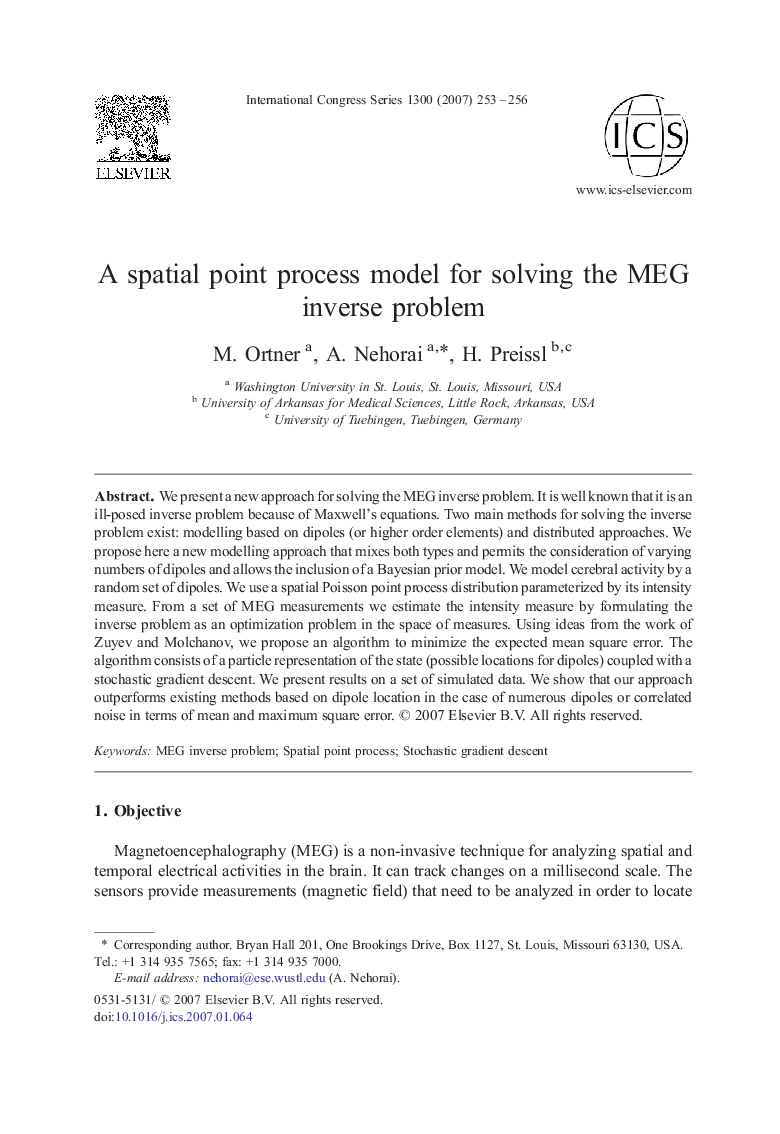| Article ID | Journal | Published Year | Pages | File Type |
|---|---|---|---|---|
| 2576652 | International Congress Series | 2007 | 4 Pages |
We present a new approach for solving the MEG inverse problem. It is well known that it is an ill-posed inverse problem because of Maxwell's equations. Two main methods for solving the inverse problem exist: modelling based on dipoles (or higher order elements) and distributed approaches. We propose here a new modelling approach that mixes both types and permits the consideration of varying numbers of dipoles and allows the inclusion of a Bayesian prior model.We model cerebral activity by a random set of dipoles. We use a spatial Poisson point process distribution parameterized by its intensity measure. From a set of MEG measurements we estimate the intensity measure by formulating the inverse problem as an optimization problem in the space of measures. Using ideas from the work of Zuyev and Molchanov, we propose an algorithm to minimize the expected mean square error. The algorithm consists of a particle representation of the state (possible locations for dipoles) coupled with a stochastic gradient descent. We present results on a set of simulated data. We show that our approach outperforms existing methods based on dipole location in the case of numerous dipoles or correlated noise in terms of mean and maximum square error.
